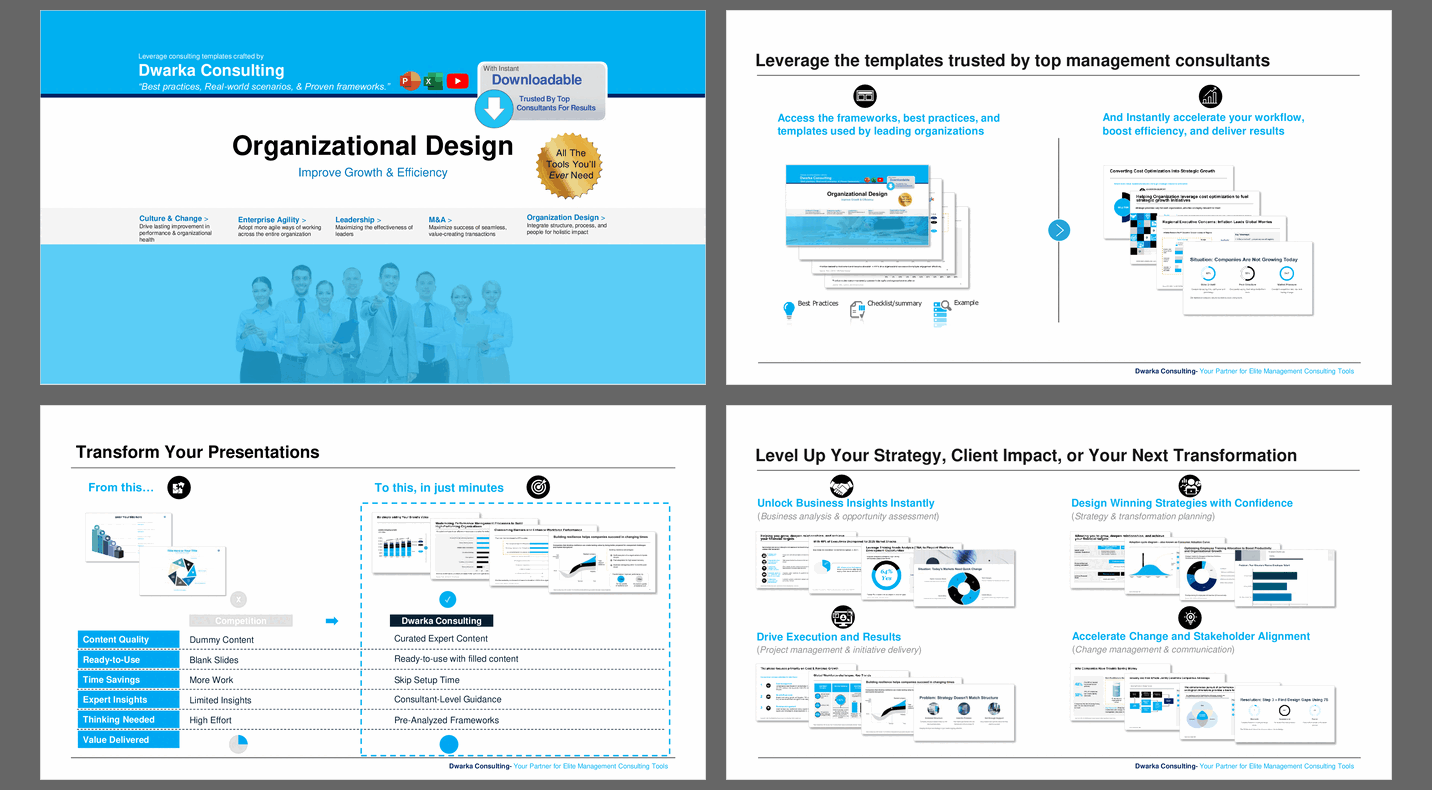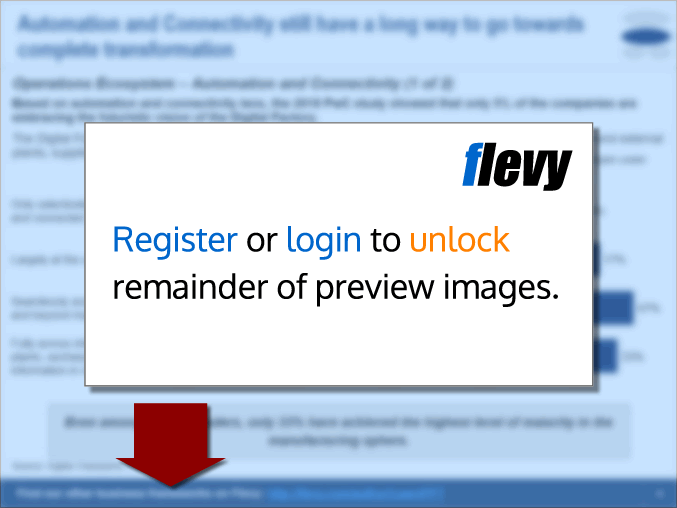Organizational Design Framework: Boost Growth & Efficiency (PowerPoint PPTX Slide Deck)
PowerPoint (PPTX) + Zip archive file (ZIP) 112 Slides
VIDEO DEMO
BENEFITS OF THIS POWERPOINT DOCUMENT
- The only blueprint that combines capability-driven org structures, governance model design, and talent alignment systems into a single integrated leadership toolkit.
- Editable, ready-to-use templates and models for immediate application
- Step-by-step guidance and real-world examples (Excel, PowerPoint, and Video) to support effective implementation
ORGANIZATIONAL DESIGN PPT DESCRIPTION
Developed by ex-Bain, Deloitte, and BCG partners and validated in thousands of Fortune 500 engagements, this is the only blueprint that combines capability-driven org structures, governance model design, and talent alignment systems into a single integrated leadership toolkit. Proven in $100M+ transformation programs and deployed in Fortune 500 boardrooms worldwide, it enables executives to redesign organizations for scale and efficiency—while sharply reducing reliance on external consultants.
The Leadership Challenge
Executives must simultaneously deliver growth, resilience, and margin expansion in volatile markets. McKinsey and Harvard research show that over 60% of transformations miss targets due to organizational misalignment—fragmented decision rights, unclear accountability, and capability gaps. Traditional restructuring relies on static org charts and ignores culture, processes, and incentives. Leaders require a systematic, evidence-based framework to align structure with strategy, ensuring both agility and efficiency.
The Executive-Grade Solution
Precision‑engineered for rapid CEO-level decision‑making. Every template and model is designed to deliver measurable growth, efficiency, and shareholder value – from day one. The only toolkit that merges corporate strategy, IT maturity, and change management into one integrated leadership playbook.
This toolkit includes:
• 111 org design PowerPoint slides
• 6 rigorously validated Excel models for spans, layers, & ROI
• 25 minutes of video masterclasses on org transformation
• Frameworks, benchmarks, case studies, and governance templates
Transforms uncertainty into a clear, winning organizational design strategy your leadership team can rally behind.
Fortune 500-Proven Blueprint
Built from decades of global transformation programs, this framework outlines a comprehensive journey for high-impact organizational design:
1. Define Strategic Objectives – Link structure directly to growth and margin targets.
2. Diagnose Current State – Map processes, spans, costs, and capability bottlenecks.
3. Design Target Operating Model – Optimize layers, decision rights, and governance.
4. Align Talent with Strategy – Ensure roles, skills, and leadership capacity match ambition.
5. Embed Culture & Incentives – Reinforce productivity and accountability.
6. Activate Transition Roadmaps – Drive adoption with phased implementation plans.
7. Sustain Growth & Efficiency Gains – Track KPIs, costs, and delivery through dashboards.
Strategic Capabilities Embedded
★ Evidence-based design frameworks beyond static org charts
★ CFO-grade modeling of spans, layers, and costs
★ Governance design ensuring accountability and agility
★ Integrated change levers to drive adoption
★ Dashboards to monitor ROI and efficiency gains
Quantified Impact & Real-World Proof
Deployed by Fortune 500 leaders, executives report:
★ 10–18% sustained reduction in cost-to-serve
★ 12–20% faster decision cycles and execution speed
★ Significant talent-to-strategy alignment improvements
★ 25–40% cut in external consulting spend
Frequently Asked Questions
Who should use this toolkit?
CEOs, CHROs, COOs, and consultants leading operating model, efficiency, or organizational transformation efforts.
What impact can we expect?
Faster decisions, lower costs, and organizations designed to accelerate strategy and growth.
How will progress be tracked?
Embedded dashboards, KPI models, and governance scorecards measure outcomes consistently.
Is this proven in my industry?
Yes. Used across Fortune 500 firms in technology, healthcare, consumer goods, finance, and manufacturing.
Take the Next Step
Backed by deployments in Fortune 500 boardrooms and high-growth enterprises across 180+ countries, this organizational design framework empowers leaders to achieve profitable growth with lasting efficiency.
Got a question about the product? Email us at support@flevy.com or ask the author directly by using the "Ask the Author a Question" form. If you cannot view the preview above this document description, go here to view the large preview instead.
Source: Best Practices in Organizational Design PowerPoint Slides: Organizational Design Framework: Boost Growth & Efficiency PowerPoint (PPTX) Presentation Slide Deck, Dwarka Consulting









